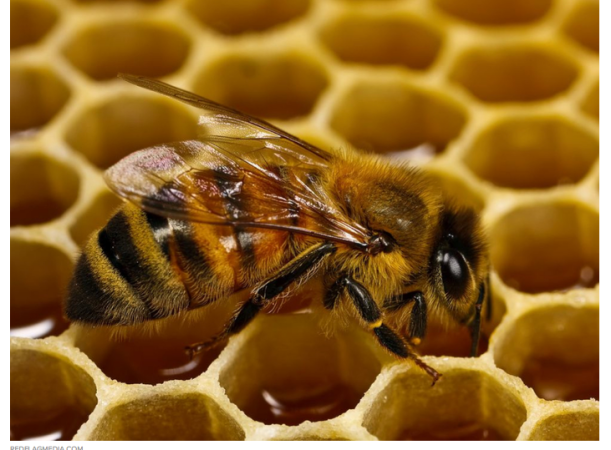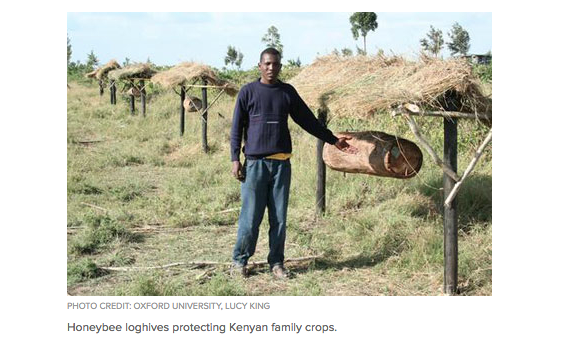Story ran in Malibu Times, June 24, 2017
It’s National Pollinator Week and a terrific time to celebrate the bees because they are golden-haired pollinators, hand-picked by nature over 100 million years ago. They ensure that floral diversity proliferates. Today, bees pollinate over 80 percent of 400,000 flowering plants and maintain our urban centers. Almost 250 million Americans, or 81 percent of our population, live in cities. Urban bees face a new deadly threat to their crucial role as pollinators.
A class of systemic insecticides known as neonicotinoids (neonics) synthetically mimics a plant compound found in tomatoes, peppers, potatoes and tobacco. A neuro-active insecticide fashioned after nicotine, neonics poison nerves and prevent acetylcholine from enabling neurons to communicate with each other and with muscle tissue. In humans, for instance, these substances would trigger Parkinson’s and Alzheimer’s diseases. Neonics kill bees, soil organisms and contaminate water.
Dutch toxicologist Dr Henk Tennekes reported that imidacloprid, made by Bayer, contaminated western Dutch surface water and killed springtails, beetles and earthworms. Those insects are a crucial food source for many common grassland bird species. Moving up the food chain, Tennekes discovered that populations of avian predators like Eurasian goshawks and northern goshawks have likewise fallen dramatically. Neonics have impoverished the web of life in Western Europe.
In January, the EPA reported that the most widely used neonic imidacloprid was deadly for bees. According to the EPA, bees are sensitive to as little as 25 parts per billion of imidacloprid. From April 2015 to May 2016, a record 44 percent of U.S. honeybees perished, up from the previous year’s record death rate of 40.6 percent.
Since 2001 the EPA has quietly green-lighted neonics in building products like wood decking (replacing chromated copper arsenate), vinyl siding, adhesive glues and caulking and polystyrene insulation. One concern with neonics in building products is the effect upon urban bees, which pollinate urban plants and trees. Urban trees provide crucial habitat for critters and shade for homes, which can reduce cooling costs by as much as 50 percent. Urban trees enhance the value of homes; neighborhoods with trees are healthier than those without.
Urban honey-, bumble- and wild-bees visit construction sites, collect saw dust, return to their hives or individual chambers to make a potent antiviral, antifungal, antibacteria, antimicrobial, anti-inflammatory and anti-cancer glue called propolis. The urban bees that visit construction sites are now at risk of carrying lethal neonics back to their hives. Bees also collect caulking and glues from construction site to make propolis, which may be laced with neonics. The sawdust from wood decking and other construction residue on sites containing neonics leaches into soil, so when rainfall occurs and bees drink from construction puddles they, too, may be contaminated with neonics. Propolis that is contaminated with neonics poisons the hive and contributes to rising bee deaths across the nation.
There are at least six companies that sell imidacloprid in wood decking in America, including Lanxess, spun-off from Bayer in 2004; Arch Treatment Technologies; United Phosphorus; Viance; Willowood; and Zelam. Viance suggests a minimum of 11 parts per million (ppm) of imidaclporid as an effective treatment against termites. Lanxess suggests treating wood at 300 ppm. Polystyrene treated insulation contains 200 ppm of imidacloprid. Adhesive caulkings have up to 1,200 ppm of imidacloprid. Plastic poly vinyl siding contains up to 10,000ppm of imidacloprid — that’s 400,000 times above the EPA threshold for toxicity to bees in plant nectar.
One natural alternative to imidacloprid that protects against termites is the Indian neem tree. Azadirachtin is neem’s main defense. It blocks and disrupts growth and reproduction of insects like termites. Turplex, Azatin EC, Align, Bioneem and Margosan-O are all neem-based products available in America that protect against termites. Neem extracts are harmless to pollinators like bees, butterflies, moths, beetles and bats as well as beneficial insects such as spiders, ladybugs and dragonflies, as well as warm-blooded animals and birds.
The unforeseen consequence of incorporating neonics into building products for urban bees is a disaster in the making. The bees are modern day canaries in the coalmines. Rachel Carson’s award-winning book Silent Spring warned that new classes of pesticides were biocides; they kill many living things other than target species.
It is time for the EPA to end poisonous neonics in building products because we need the urban bees to survive. Bees give us our food, clothes (cotton), 450 million pounds of honey and 9 million pounds of beeswax to shine our cars each year in America, and potent apis therapy pain medicines for rheumatoid arthritis, fibromyalgia and multiple sclerosis.
If the bees die, we die.
Earth Doctor Reese Halter is a broadcaster, biologist and author of The Incomparable Honeybee & The Economics of Pollination.










